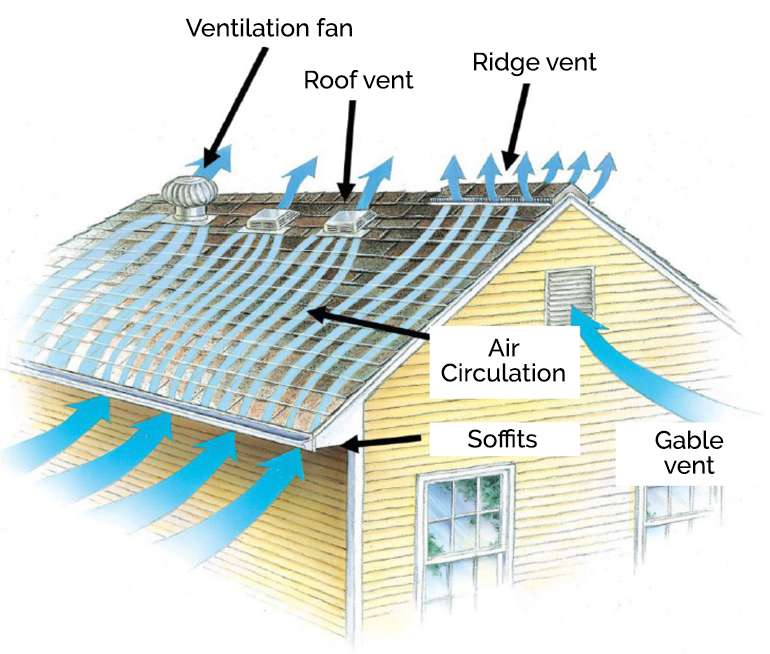This simple yet essential system plays a significant role in the longevity and performance of your roof. At Aces Roofing, we understand the critical importance of roof ventilation and are here to explain its benefits for your home.
Understanding Roof Ventilation
Roof ventilation systems are designed to allow air to flow through the attic, creating a balance between the air inside and outside. This balance is achieved through a combination of intake and exhaust vents.
- Intake Vents: These are usually placed under the eaves of the roof, allowing fresh air to enter the attic.
- Exhaust Vents: Located near the roof ridge, these vents allow warm, moist air to escape.
The continuous movement of air through these vents prevents the buildup of heat and moisture, protecting the roof and the overall structure of your home.

The Importance of Roof Ventilation
- Temperature Regulation: In the summer, attics can become extremely hot, reaching temperatures that can cause significant damage to roofing materials and increase cooling costs. Proper ventilation helps to expel this hot air, reducing the strain on your HVAC system and lowering energy bills.
- Moisture Control: Moisture can accumulate in the attic from everyday activities like cooking, showering, and even breathing. Without proper ventilation, this moisture can condense and lead to mold growth, wood rot, and structural damage. Effective ventilation prevents these issues by allowing moist air to escape and fresh air to circulate.
- Prolongs Roof Lifespan: Excessive heat and moisture can deteriorate roofing materials, causing shingles to warp, crack, or even fall off. By maintaining a well-ventilated attic, you can extend the life of your roof and avoid costly repairs or replacements.
- Improves Indoor Air Quality: Poor ventilation can lead to a buildup of indoor pollutants, including mold spores, dust, and other allergens. A well-ventilated roof helps to maintain better indoor air quality, contributing to a healthier living environment.
- Prevents Ice Dams: In colder climates, inadequate roof ventilation can lead to the formation of ice dams. These occur when warm air in the attic melts snow on the roof, which then refreezes at the eaves, causing water to back up and potentially leak into the home. Proper ventilation helps to keep the roof surface cool and prevent ice dams from forming.
Benefits of Proper Roof Ventilation
- Energy Efficiency: Reduces cooling costs in the summer and heating costs in the winter.
- Enhanced Comfort: Keeps indoor temperatures more stable and comfortable year-round.
- Roof Integrity: Protects roofing materials from heat and moisture damage.
- Healthier Home: Reduces the risk of mold and mildew, improving indoor air quality.
- Cost Savings: Minimizes the need for frequent roof repairs and extends the life of your roofing system.
Trust Aces Roofing for Your Ventilation Needs
At Aces Roofing, we specialize in installing and maintaining roof ventilation systems that enhance the durability and performance of your roof. Our experienced team can assess your current ventilation and recommend the best solutions to keep your home safe, comfortable, and energy-efficient.
Don’t overlook the importance of roof ventilation. Contact Aces Roofing today to learn more about how we can help you achieve a well-ventilated and protected home.
